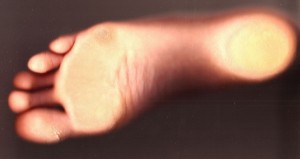 It’s bad enough to have tired, aching feet at the end of the day, but it’s even worse to wake up with foot pain. If you find it painful to walk after getting out of bed first thing in the morning, you may be suffering from plantar fasciitis. According to WebMD, although walking around may initially alleviate the morning pain, it’s typical for the soreness and discomfort to return with a vengeance later on, especially if you spend a lot of time on your feet throughout the day. Plantar fasciitis is a condition that’s not fully understood. That has led the experts to cover their bases and behinds by mentioning everything that could be the cause as well as numerous solutions that might help but, in the end, the actual causes and effective treatments can depend on individual circumstances.
It’s bad enough to have tired, aching feet at the end of the day, but it’s even worse to wake up with foot pain. If you find it painful to walk after getting out of bed first thing in the morning, you may be suffering from plantar fasciitis. According to WebMD, although walking around may initially alleviate the morning pain, it’s typical for the soreness and discomfort to return with a vengeance later on, especially if you spend a lot of time on your feet throughout the day. Plantar fasciitis is a condition that’s not fully understood. That has led the experts to cover their bases and behinds by mentioning everything that could be the cause as well as numerous solutions that might help but, in the end, the actual causes and effective treatments can depend on individual circumstances.
We’re not claiming to know all the answers or have the final word in plantar fasciitis, but we have done a little digging around and want to share the information we’ve found. Depending on your physical health and lifestyle, you may find it useful.
It’s Not What They Say

The plantar fascia is the band of tissue that runs along the bottom of your foot, from heel to toes. Image by mmarchin/Flickr
The plantar fascia is the band of tissues that runs along the bottom of your foot from heel bone to toes. Many people compare it to an archery bow because that’s what is resembles. It’s naturally taut, though flexible, and supports the arch in your foot. If you’ve done any research on your own, you’ve probably seen authoritative resources refer to it as a tendon, but that’s not completely true. The plantar fascia tissue is closer to being a ligament because it connects bone to bone, rather than connecting muscle to bone.
That misclassification isn’t the only misleading thing about conventional plantar fasciitis information. The pain is typically attributed to inflammation, thus the “itis” at the end of the name. However, a study published in the Journal of the American Podiatric Medical Association found that tissue inflammation is not typically present with the true cases of the condition, and that it is actually a case of tissue degeneration. Sometimes degenerative issues can develop as you age and sometimes they are genetic.
What Causes Plantar Fasciitis-osis?
No one has been able to really pinpoint one, conclusive cause of plantar fascia pain, but many educated theories are floating around out there. Some common hypotheses include:
- obesity
- improperly fitting shoes
- over pronation–rolling your feet inward as you walk
- standing, walking, or running on hard surfaces for extended periods of time
- high arches
- no arches–flat feet
Notice how those last two seem to conflict with each other? Having arches can cause pain, but so does not having them?
In some cases, the way your foot is shaped can cause you to develop plantar fascia pain. Sometimes that can be caused by an injury like if you break your foot and it heals screwy, but you can also be born with an abnormality, like science writer Paul Ingram. He was born with a slight deformity of his foot bones that interferes with his arch and has caused chronic problems with his plantar fascia.
If you have plantar fascia pain that isn’t an inherited condition or due to the shape of your foot, it’s probably the result of a repetitive use injury, kind of like carpal tunnel syndrome, tennis elbow, or runner’s knee.
Pain Treatments and Management

A foot massage will feel good and may temporarily alleviate plantar fascia pain, but it’s not a long-term fix.
There are a number of ways medical professionals treat plantar fascia pain and, according to Sports Injury Clinic, many times the plan of attack is to use a combination of methods. That is likely due to the fact that the cause is difficult to pinpoint, so your healthcare provider will cast a wide net to increase the odds of addressing what’s really at the root of your problem. In severe cases when more conservative treatment doesn’t help, steroid injections or surgery might be recommended. However, in the study mentioned above, the researchers concluded that steroid injections weren’t necessarily the best treatment for the condition because they cannot stop or reverse tissue degeneration and have the potential to cause further damage to the plantar fascia.

Weighted calf raises are just one resistance exercise that will strengthen your calf muscles for a longer-term solution for your foot pain.
Managing the pain through therapies and lifestyle changes may be your best bet. Over the counter painkillers can help, and you can try over the counter orthotic inserts in your shoes or have your doctor prescribe custom-made ones. Physical therapists have seen some improvement in patients who wear special splints at night that stretch the plantar fascia and the Achilles tendon during sleep. Physical therapists also recommend calf stretches for plantar fascia pain, but you shouldn’t stop with simple stretching. Strengthening your calf and other lower-leg muscles is a proven way to effectively combat the pain. A study published in the Scandinavian Journal of Medicine and Science in Sports found that people who participated in high-load strength training for their legs and calves experienced faster plantar fascia pain reduction and improved function than those who only performed stretches.


Good way of describing, and good post to obtain data concerning my presentation topic, which i am going to deliver in school.